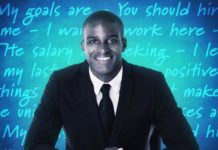Advertising your-self with a professional profile is a very daunting task when you are confused between these three terms – “Resume, CV and BioData”. Specially, it is very confusing for a fresher who first time plans to enter into the corporate world.
To bring out from the confusion, these are the differences between “Resume, C.V., and BioData”.
Biodata :-
Biodata:- A Biodata is also called a “Biographical Data”
Definition:- A Biodata is a document which mainly contains the personal facts about a person. Sometimes, with the personal facts, it also contains the educational background, professional background, skills, hobbies, interest, strengths, potential, and achievements of a person.
The personal facts a Biodata includes :– a person’s height, weight, father’s name, Mother’s name, gender, complexion, caste, religion, marital status, nationality, permanent address, date of birth etc.
The best used in places:- India uses Biodata for the marriage purpose.
The best used for:- The uses of a Biodata differs from country to country – in India, it is mainly used for traditional marriage purposes, but in many other countries, it is often used to apply for employment.
The length of a Biodate:- One page of a Biodata with personal facts is sufficient for marriage purpose, but if you want to consider it to showcase your personal & professional detail both, it may go up-to two – three pages.
Resume :-
Pronunciation of a Resume : re-su-me
Definition:- A Resume is a short summary of your skills, education, experiences, accomplishments, ability and talent that plays a vital role when you like to become a top businessman, like to do non-profitable job, profitable job, or government job.
A standard polished Resume can resolve the purpose of getting the interview calls quickly; choose the best formatting style for your Resume to impress the hiring manager at first glance.
The best used in places:- The trend of a Resume is popular in Canada and US. Job seekers of these two places use CV to apply for international jobs, academic jobs, or research oriented job.
The best used for:- It is best used to advertise your professional profile in the corporate world.
The Length of a Resume:- Length of a Resume can reach up-to three pages depends on your industrial experiences and your needs.
Reverse Chronological Resume Checklist
- The “Reverse-Chronological resume format” is a most traditional and popular resume format among job seekers and employers because it considers all industries and levels of experience. But it is better if the job seeker has a few years of work experience (strong work history).
- Use this format, when you like to apply for a job in the same field, not when you like to change your career path. For example – If you have had a few years of experience working as a cashier in the retail industry and want to apply for a next level of position in the same field, use this resume format to jot down your career progress vertically.
- As the format gives more stress to the experience section of a resume which is well known for the employers – choose this format for your resume if you can list the same field of experiences without showing major gaps in the employment history, otherwise don’t use this format. Also, don’t use this format if you are changing jobs in every few months.
- Display the work history in the experience section of your resume in the reverse chronological order – means, a job seeker most recent job history will be listed first, pursued by each of your prior jobs in order by date
Order of a Reverse Chronological Resume Template
Contact Information (Mandatory)
Essential Information:-
- Name (First Name + Middle Name + Last Name): Make it the largest one among all fonts in your resume.
- Address: Permanent address
- E-mail: Professional Email, not the school/collage/childish(like; cute& mail id)
- Phone number: Land Line/Mobile
Optional Information:
- Personal website link: If helpful in professional career development
- LinkedIn profile: Make it relevant to the job you are applying for
- Social Media Links: If helpful in the career development
Remove all hyperlinks that automatically generate with your emails and URLs.
Job Objective (Optional)
It is 10 – 15 words of a sentence, more applicable – when you are a fresher, want to change your career path, and to show directly to the employer that which position you want to acquire & which responsibilities you want to take.
Objective/Summary (Optional)
Choose any one objective between three objectives from the give below list based on the type of job seeker you are
- Career Objective
- Professional Profile (or Profile)
- Qualifications Summary
Professional Experience (Mandatory)
- As it is a most important section of the reverse-chronological format, start listing your experiences with the most recent position
- List the experiences that are relevant to the job you are applying for
- List the role and the responsibilities you have taken in your previous jobs, but more than that highlights what you have achieved & accomplished in your previous jobs
- Quantify your achievements & accomplishments that can make easier for employers to understand your importance.
Education Section (Mandatory)
- List your degrees in reverse chronological order
- Avoid listing abbreviation of your degrees; list the degrees with its full name. For example; Instead of listing “MBA” in your degree, list “Master of Business Administration”
- If you have taken higher education after a few years of work experiences – list the education section at the top of the resume before the professional experience section.
And, if you have not gone for any regular/correspondence education after getting a few years of experiences – list the education detail at the bottom of the resume after the professional experience section.
Skills (Optional)
IT Skills: List the IT skills if you are applying to the IT industry.
- Include software and hardware you are familiar and friendly with
- Include the programming languages you know
- Include all other IT skills that are might be relevant to the job you are applying for
Industry specific Skills:
- Include the skills that are specific to the job profile
- Include the proficiency of communication skills and interpersonal skills
Additional Sections (Optional)
Additionally, you can include these all optional sections, if you feel these sections can strengthen your resume,
- Publication
- Language
- Presentations
- Research
- Honors/Awards
- Certifications/Licenses
- Extracurricular Activities
- Volunteer Work Experiences
- Collage Projects
- References
Reverse-Chronological Resume Templates
The reverse chronological resume template is basically for professionals who have major achievements, accomplishments, experiences, and specialization in the job profile they are applying for. As the resume starts by displaying a job seeker’s vertical career progress, make easier for the employers to screen out the candidates for the interview with respect to the job they are applying for.
Here, you will see various reverse chronological resume templates that facilitate you to develop your resume with the ease by putting relevant details in the relevant sections of your resume.
1) Reverse-Chronological Resume Template Of Experienced Retail Store Cashier
Job Seeker detail: The job seeker is of 8+ years of experienced professional cashier, currently, working at Wal-Mart and finding a next level of job in the same field. A professional is also received the honor of “Microsoft Office Specialist (MOS) certification” in between his job.
Resume Checklist: As a job seeker is 8+ years of experienced professional who has maintained the continuity in his job from past 8+ years and in-between his profession, he has taken “Microsoft Office Specialist (MOS) certification” – the resume will give more stress on highlighting Profile Summary, Certification, and Professional Experience sections at the top of the resume.
2) Reverse-Chronological Resume Template Of Experienced Chef
Job Seeker detail: The job seeker is of 9+ years of experienced professional chef, after getting 9+ years of job experience, went back to collage for higher studies. Once, he has finished his degree, again started finding a job in the same field.
Resume Checklist: Here, in this resume template, the education section will be above the professional experience section, because, the job seeker has left his job and went back to collage for his higher studied for his career progress betterment.
Generally, in the resume, we place the education section at the bottom of the resume when a job seeker had been completed his studies long back, but, if a job seeker leaves his job for higher studies for his bright future, the education section will be at the top in the resume.
CV (Curriculum Vitae) :-
CV: CV stands for Curriculum Vitae
The curriculum vitae is a document which includes the summary of your academic qualification, educational background, skills, , work experiences, awards, honors, presentations, teaching experiences, degree research, publications and other vital details of an individual.
A Resume and a CV (Curriculum Vitae) both are used for the same purpose, the only difference is there in their format and length.
In India, Australia and South Africa – Resume and CV both are used for the purpose of employment, the only difference is – the word Resume is used regularly for the private sector jobs and CV for the public sector jobs.
The best used in places: Exclusively, in the UK, Ireland, and New Zealand, companies demand for CV to screen-out the candidates for the job interviews.
The best used for: CVs are mainly used to applying for – intercontinental, health care, research, academic, teaching, scholarships, assistantships, fellowships, internships, and scientific jobs.
The length of a CV: There is no page limit for Curriculum Vitae, the only thing is – it is always being considered as larger in length as compared to Resume.
Best Practices
Whatever item (Resume, Biodata, or CV) you choose to describe your personal and professional details in summarized form, the best thing you need to do is – you should know “the purpose of choosing the item, the details you want to include in the item, and in which order you want to place the details in the item?”
















